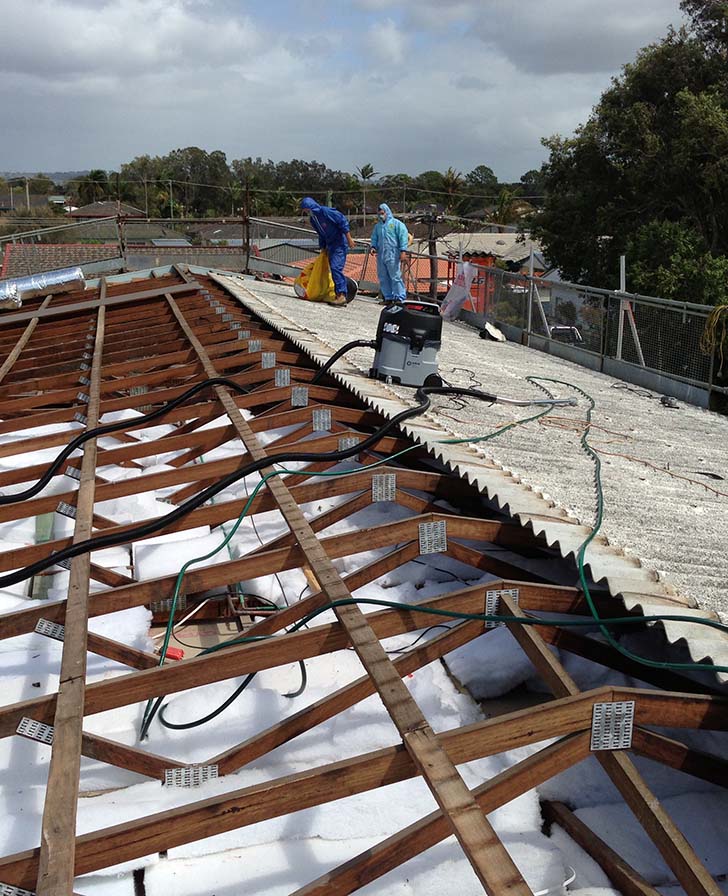Asbestos in Ballina
Roof Specialists in Ballina
Asbestos in Ballina
The three most common types of asbestos that were mainly used in a wide range of products are Chrysotile (white asbestos) Crocidolite (blue asbestos) and Amosite (brown or grey asbestos).
Until the late 1960’s, the Australian industry used both serpentine (75%) and amphibole (25%) asbestos. Subsequently, the use the chrysotile increased to approximately 95% while blue and grey asbestos declined to 5%.
More than 3000 asbestos products and their uses have been identified. Most Australian homes contain asbestos products in one form or another.
Currently, a WorkCover asbestos Licence is required to remove more than 10 square metres!
In compliance with the NSW OHS Regulations 2001 and in accordance with the NSW OHS Act 2000, WorkCover NSW have issued Nathan Crake Roof Plumbing with a Bonded Asbestos Removal Licence.


Email or call us today your request for a Free Asbestos Roofing Removal and Replacement Quote.
Can asbestos be removed in a safe manner?
Different forms of asbestos material have different risk levels.
If asbestos fibres are in a stable material such as bonded in asbestos-cement sheeting such as fibro and in good condition they pose little health risk. However where fibro or other bonded asbestos sheeting is broken, damaged or mishandled fibres can become loose and airborne posing a risk to health. Disturbing or removing it unsafely can create a hazard. In materials such as pipe lagging and sprayed roof insulation asbestos fibres are not bound in a matrix. High concentrations of fibres are much more likely to be released into the atmosphere when these materials are disturbed or removed.
Safe Procedures


- Do not use power tools. Asbestos fibres can be released if power tools are used for anything other than the removal of screws over metal washers.
- Wear an Australian Standards Protection Level 2 (P2) minimum half face disposable mask and disposable coveralls. These are generally available from hardware suppliers. Non- Australian Standards certified masks should not be used where asbestos is present.
- Wet sheets down to reduce dust generation and movement.
- Take the sheets off whole (again, do not use power tools as this may create dust movement).
- Seal sheets in construction grade plastic. (This should be 200 microns thick.)
- Contact your Local Council for a licensed disposal point in your area.
- Should the asbestos be in powder form or can be crumbled, pulverized or reduced to powder by hand pressure when dry, then an asbestos removal contractor with an AS1 Licence is required for its removal.
- Removal of loose/friable asbestos or amounts of bonded asbestos sheeting greater than 10 square metres must be done by a licensed person.
Working With The Best
Major Suppliers






